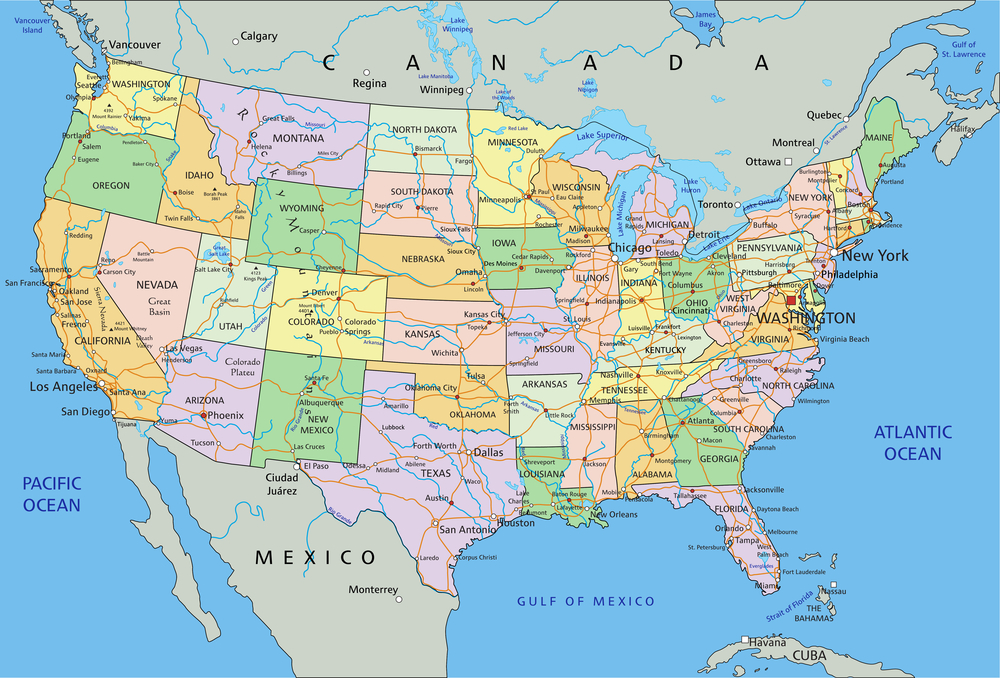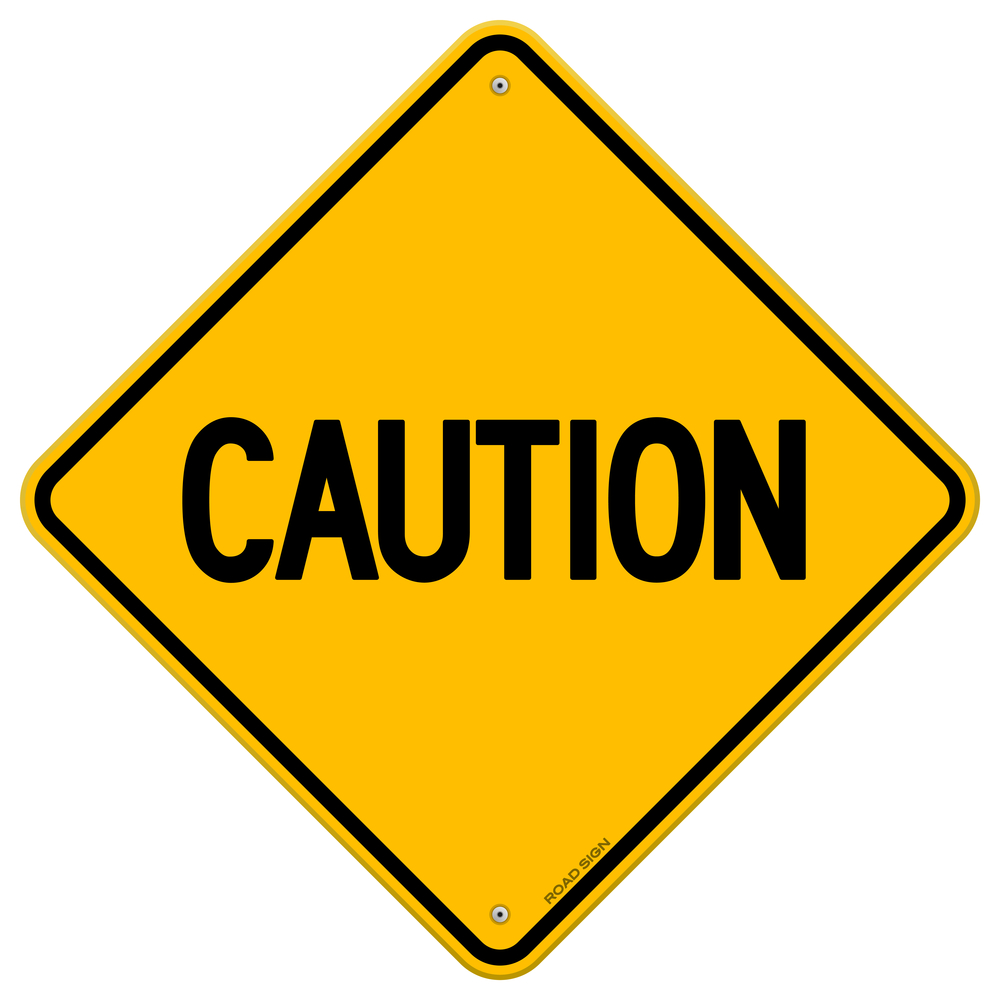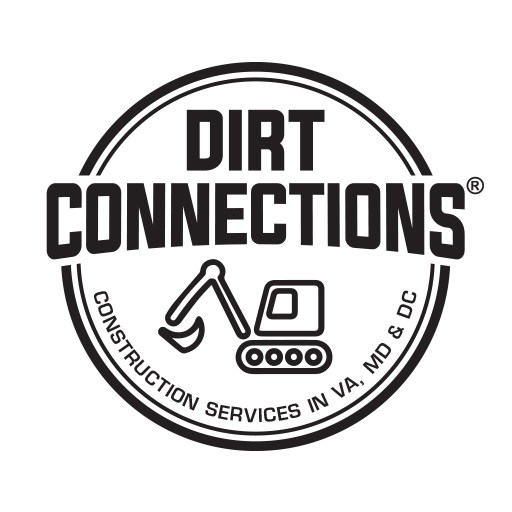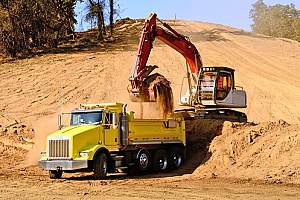Learn where to buy Virginia fill dirt and more. I will answer many questions about fill dirt. The information below can help you make the best buying decision possible. Making the best decision can help you achieve great results.
What Is Virginia Fill Dirt?
Let me start by explaining what fill dirt is. Fill dirt is a mixture of broken down rocks, sand and clay. It contains little organic matter for the growth of plants. The weathering of soil materials on Earth’s surface make soil. The weathering breaks up rocks, and induces the chemical weathering of minerals. As water percolates through the soil, this increases the breakdown of the surface material. With the introduction of increased temperatures, additional chemical weathering occurs. With different climate regions, you can expect different types of soil conditions. Our discussion we will focus on the regions located in the Mid Atlantic Area. This area includes Pennsylvania, West Virginia, Maryland, Delaware, New Jersey and Virginia. However, it will mostly be focused on Virginia fill dirt, which is where Dirt Connections primarily sources and stores its fill dirt.
Order Virginia Fill Dirt Delivery Online
Where Is Our Fill Dirt Sourced From?
The Coastal Region
Coastal are derived form marine and or estuaries. An estuary is a partially enclosed coastal body of brackish water. Brackish water is possible with one or more rivers or streams flowing into it. This area of water has a free connection to the open sea. Estuaries form a transition zone between river environments and maritime environments known as ecotone (a region of transition between two biological communities).
The coastal states that have shorelines on the Atlantic Ocean are, Maine, New Hampshire, Massachusetts, Rhode Island, Connecticut, New York, New Jersey, Delaware, Maryland, Virginia, North Carolina, South Carolina, Georgia, and Florida.
Typical Coastal Plain soils have a sandy topsoil and clayey subsoil. This type of soil provides low plant nutrients, and acidic. Carrots, parsnips and potatoes favor this type of sandy soil. Lettuce, strawberries, peppers, corn, squash, zucchini, collard greens and tomatoes are grown commercially in sandy soils.
The Piedmont Region
The Piedmont occurs in the hilly northernmost part of the state and is composed of crystalline metamorphic and igneous rocks. These include a variety of rock types that were formed deep in the earth by metamorphic processes, mostly in the early part of the Paleozoic Era
The Piedmont is a plateau region located in the Eastern United States. This area is the Atlantic coastal plain and the main Appalachian Mountains. This region stretches from New York in the north to central Alabama in the south. The Piedmont area is approximately 80,000 square miles.
Piedmont soils are clay-like and are moderately fertile. Some areas suffer from from erosion and over-cropping.
Where to Find Free Fill Dirt?
Befriend a Farmer. Manure is a great amendment for your garden soil, and it’s readily available. Jump on Craigslist or Freecycle, and you’ll find lots of ads for free dirt. My experience is the customer service is non existent. You can be left with sub standard material. If you have any problems, you will have difficulty finding the service provider. Deliver material with unwanted debris. These providers lead to problems which can lead to expensive costs. These retail practices give our industry a bad name. I know fill dirt providers who ignore phone calls, change their phone numbers and or move out of state. You want to deal with a professional dirt provider.
Where To Buy Virginia Fill Dirt?
You need to find suppliers as close to your delivery area as possible. The hauling/trucking is the major expense of fill dirt delivery. The farther you have to haul the material the greater the cost.
Fill Dirt Near Me
Call Dirt Connections. We work with associates from Richmond, Virginia to Baltimore, Maryland and all points between. A request for a quote is FREE. We can provide you with valuable information about products and delivery fee.
Associated Fill Dirt Costs
The acquisition of the project, mobilization of heavy equipment (excavators & loaders), operators, fuel, insurance, etc. add to the dirt hauling fee. A typical residential excavation job runs between $1,446 and $5,042 with an average of $3,103. Project bids reflect cubic yards of dirt moved, anywhere from $50 to $200 per cubic yard. The previous cost does not reflect the hauling and disposal fees associated with fill dirt removal. The costs provided are on the very low end for our market area.
What is Fill Dirt Used For?
Remember, fill dirt is normally used to add stability to your yard or project. Topsoil adds nutrients to the dirt and is typically used for gardens, plants and grass growth.

When Should I Use Fill Dirt?
Use fill dirt filling depressions on the property. This allows for smooth contours. Smooth contours will allow for enhanced landscaping and beauty. With soft contoured landscape lines, the property is more appealing. This appeal often allows for increase monetary values and marketability.
How Much Fill Dirt In A Truckload?
You can always email Dirt Connections for help. I can provide you with some information to help you discover how much fill dirt you need. See the example below for additional information. One trick I learned from some associates is this;
- Length (10 feet) x Width (100 Feet) = 1000 Square Feet
- Depth is 4 inches (.333)
- 1000 Square Feet divided by 81 = 12.22 Cubic Yards
- 12.22 Cubic Yards = The Cubic Yards at a 4 Inch Thickness
- Each Dump Truck Load Carries 10 – 12 Cubic yards
- 12.22 Cubic Yards divided by 10 Equals one (1) Dump Truck Loads
- If you have questions, send us an email.
How To Calculate Cubic Yards
How Much Do I Need?
Use the formula above. If you need help, let us know.
What is Clean Fill Dirt?
The term “fill” is a generic term for any kind of dirt material used to fill low areas. The term “clean” fill simply means the material contains no contaminants.
What is Screened Fill Dirt?
Fill dirt processed through a screening machine becomes screened fill dirt.
What is the Best Type of Fill Dirt?
Dirt that contains makes for great fill dirt.
How Much is Virginia Fill Dirt?
Virginia fill dirt ranges from $7 to $12 per cubic yard. Sand typically falls between $15 and $40 per cubic yard. These prices do not reflect delivery.
What Kind of Dirt for Low Spots?
Use clean topsoil.
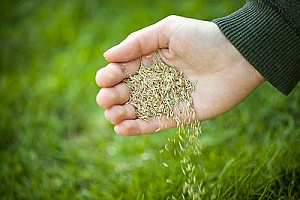
Filling Low Spots in the Lawn
You can easily make your own lawn patching soil by mixing sand and dry topsoil in equal parts of half-and-half, spreading the leveling mix into low-lying areas of the lawn.
Where Can You Dump Clean Fill Dirt?
- Local Landfill
- Recycling Centers
- Clean Fill Dump Areas
- Landscape or Building Suppliers
- Dirt Connections Hauls & Dumps
What Kind Of Dirt to Fill Holes?
 To fill in lawn ruts and holes, blend planting soil with sand and/or compost. Usually blending equal parts of each material forms a mix that allows grass to root effectively through the mix into existing soil. Check with your local extension agent or garden center for specific soil recommendations for your area.
To fill in lawn ruts and holes, blend planting soil with sand and/or compost. Usually blending equal parts of each material forms a mix that allows grass to root effectively through the mix into existing soil. Check with your local extension agent or garden center for specific soil recommendations for your area.
Can Grass Grow on Fill Dirt?
Grass can grow on fill dirt. You will achieve better results with topsoil. You can place sod on fill dirt that has been graded.
What Is Clay Used For?
This material compacts well for construction. Clay is used for the linings of ponds. This lining prevents the discharge of water from the pond area.
What is the Cost for One Dump Truck Load of Fill Dirt?
A dump truckload of fill dirt costs between $150 and $450, including delivery. One truck load typically holds 10 to 14 cubic yards of dirt.
10 – 12 Cubic Yards of Covers How Much?
10 – 12 cubic yards will cover approximately 1000 square feet at a 4 inch depth.
How to Fix a Muddy Yard?
A quick and inexpensive temporary fix for a muddy yard is to put straw or hay down. If grass seed is planted first the straw covering can give it time to sprout and take root. The straw covering will allow your dogs to play outside without tracking in mud and dirt. If the area is muddy, it usually means water is trapped at that location. Take fill dirt, fill in the depression and enhance the water to run out of the depression. Slope the dirt in the direction of the lay of the land.
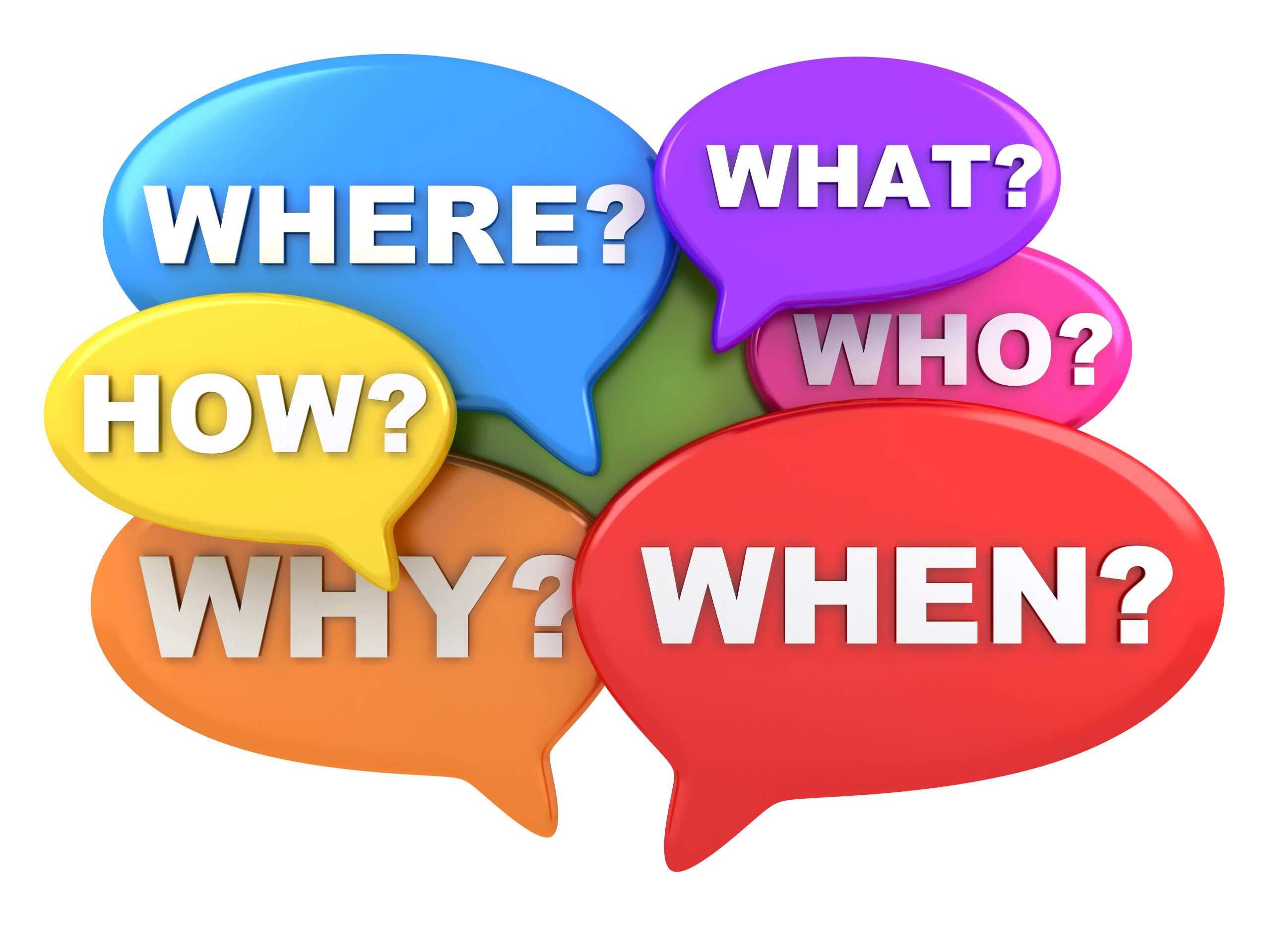
What to Use to Level Your Yard?
Make a soil mix of topsoil and nutrients and apply to the low areas. You can now take a rake and smooth out the area. Now apply seed and straw.
Old Dirt?
You can use this material for the lawn, planted pots or your garden.
Potting Soil – Recycle
Place in your garden or distribute throughout your lawn area.
Rock & Dirt Disposal?
- Dirt Connections, loading, hauling and disposal.
- Local landfills and recycling centers that accept mixed heavy debris.
- Landscapers or suppliers that accept rocks or gravel from the public.
Okay to Use Potting Soils for My Yard?
Yes.
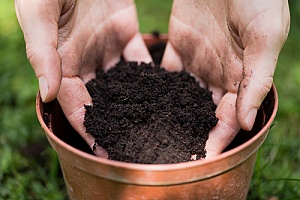
Will Grass Seed Grow on Hard Dirt?
No, you need to fluff up the dirt cover. This allows for the seed to bind to the dirt and germinate. Remember to cover the grass seed with straw. This provides for protection from the sun and birds.
Will Sod Grow on Hard Dirt?
Yes, sod will grow. The sod has a layer or rich organic base, where the grass is attached. You should loosen and prepare the dirt for improved sod growth. You want to aerate/ rake the soil. This will allow for the sod to adhere to the soil below.
What is Fill Dirt Used For?
Fill dirt is used to establish a suitable base. This base allows for landscaping to the property. Seed and straw, sod and other plantings are added for the final ground cover. This ground cover allows for the beautification of the property. This allows for improved monetary value and marketability.
What is the Best Fill Dirt?
The best fill dirt has clay and sand. This soil permits for compaction. This will allow for the shaping of the property.
Is Sand Good for Fill?
No.
Fill Sand Benefits and Considerations
Fill sand has fine particles. Sand helps with drainage and percolation. The drainage properties do not allow for moisture retention.
Can I Use Topsoil as Fill Dirt?
How Many Yards in a Dump Truck?
Pick up trucks can haul approximately 1.5 cubic yards. F-450, F-550 Ford dump trucks carry approximately 5 cubic yards. Full size dump trucks carry 10 – 12 cubic yards. 10 – 12 cubic yards is 100 – 120 wheel barrow loads.
How Many Tons Per Dump Truck?
The Ford 450 – 550 dump truck hauls approximately 6 tons of material. A full size dump truck hauls approximately 12 -13 tons. A dump truck with more axles can carry more weight. It is important to always abide by Federal, State and local road weight regulations. An overweight truck is susceptible to expensive fines.
One Cubic Yard = How Many Bags of Topsoil?
- 27 – 1 Cubic Foot Sized Bags = 1 Cubic Yard
- 9 – 3 Cubic Foot Sized Bags = 1 Cubic Yard
What Does 10 Cubic Yards Look Like?
14 feet long, 7.5 feet wide and 3.5 feet high
How Do You Slope a Lawn?
Install fill dirt to your desired contour. Make sure to compact the material as you go. This compacted material should hold it’s shape.
Does Soil Go Bad?
No, as long has you don’t introduce contaminants.
What Kind of Dirt Should I Use to Fill Holes?
Small shallow holes should be filled with fine and organic rich topsoil.
Never Order To Much Dirt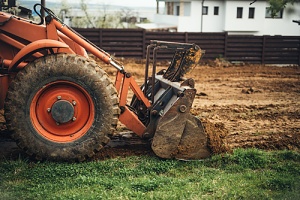
Dirt removal is expensive. With large volumes you will have to rent heavy equipment and an operator, this is expensive.
Will Grass Seed Grow Sitting on Topsoil?
Yes, the better the organic content the better grass will grow.
What Type of Dirt for Grading?
Use fill dirt for the rough grading. This material will hold it’s shape. How Much Does 1 Cubic Yard of Fill Dirt?
One cubic yard of topsoil weighs approximately 1,080 pounds. This weight will vary with increased or decreased moisture content.
Before You Dig Call Ms. Utility
How Do You Dispose of Contaminated Dirt?
Contaminated soil must be disposed of at an EPA approved site. There are no other options.
Why Not Buy Topsoil?
If you have to spend money, why not buy topsoil? Topsoil is richer in organic matter. Topsoil can be unscreened or screened. This material is usually free of all materials larger that 3/4′. The end result will determine which soil is best to buy.
Fill Dirt vs Topsoil
Both soils can be used to fill depressions. Fill dirt is more dense and allows for better compaction. Topsoil is best used with the intention for improved plant growth.
Choosing the Right Fill Dirt for Your Project
When selecting fill dirt, it’s essential to understand how different types of fill can impact your project. Virginia fill dirt is popular for various uses, including stabilizing landscapes and filling low spots. For optimal results, you should consider factors like soil composition, such as the balance of clay and sand, to ensure proper compaction and stability. Fill dirt with a high clay content is ideal for creating a solid base, while sandier mixes are better for drainage. Remember, topsoil, though rich in organic matter, is best for plant growth, while fill dirt provides the structural support needed for grading and leveling. For more detailed advice and options, contact us to explore your specific needs.
